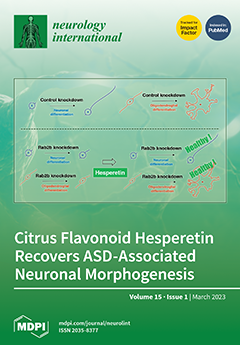Open AccessEditor’s ChoiceSystematic Review
Exploring the Impact of Cerebral Microbleeds on Stroke Management
by
Anastasia Sousanidou, Dimitrios Tsiptsios, Foteini Christidi, Stella Karatzetzou, Christos Kokkotis, Aimilios Gkantzios, Chrisostomos Bairaktaris, Vaia Karapepera, Paschalina Bebeletsi, Ioanna Karagiannakidou, Marinos Marinidis, Nikolaos Aggelousis and Konstantinos Vadikolias
Cited by 3 | Viewed by 1953
Abstract
Stroke constitutes a major cause of functional disability and mortality, with increasing prevalence. Thus, the timely and accurate prognosis of stroke outcomes based on clinical or radiological markers is vital for both physicians and stroke survivors. Among radiological markers, cerebral microbleeds (CMBs) constitute
[...] Read more.
Stroke constitutes a major cause of functional disability and mortality, with increasing prevalence. Thus, the timely and accurate prognosis of stroke outcomes based on clinical or radiological markers is vital for both physicians and stroke survivors. Among radiological markers, cerebral microbleeds (CMBs) constitute markers of blood leakage from pathologically fragile small vessels. In the present review, we evaluated whether CMBs affect ischemic and hemorrhagic stroke outcomes and explored the fundamental question of whether CMBs may shift the risk–benefit balance away from reperfusion therapy or antithrombotic use in acute ischemic stroke patients. A literature review of two databases (MEDLINE and Scopus) was conducted to identify all the relevant studies published between 1 January 2012 and 9 November 2022. Only full-text articles published in the English language were included. Forty-one articles were traced and included in the present review. Our findings highlight the utility of CMB assessments, not only in the prognostication of hemorrhagic complications of reperfusion therapy, but also in forecasting hemorrhagic and ischemic stroke patients’ functional outcomes, thus indicating that a biomarker-based approach may aid in the provision of counseling for patients and families, improve the selection of more appropriate medical therapies, and contribute to a more accurate choice of patients for reperfusion therapy.
Full article
►▼
Show Figures






